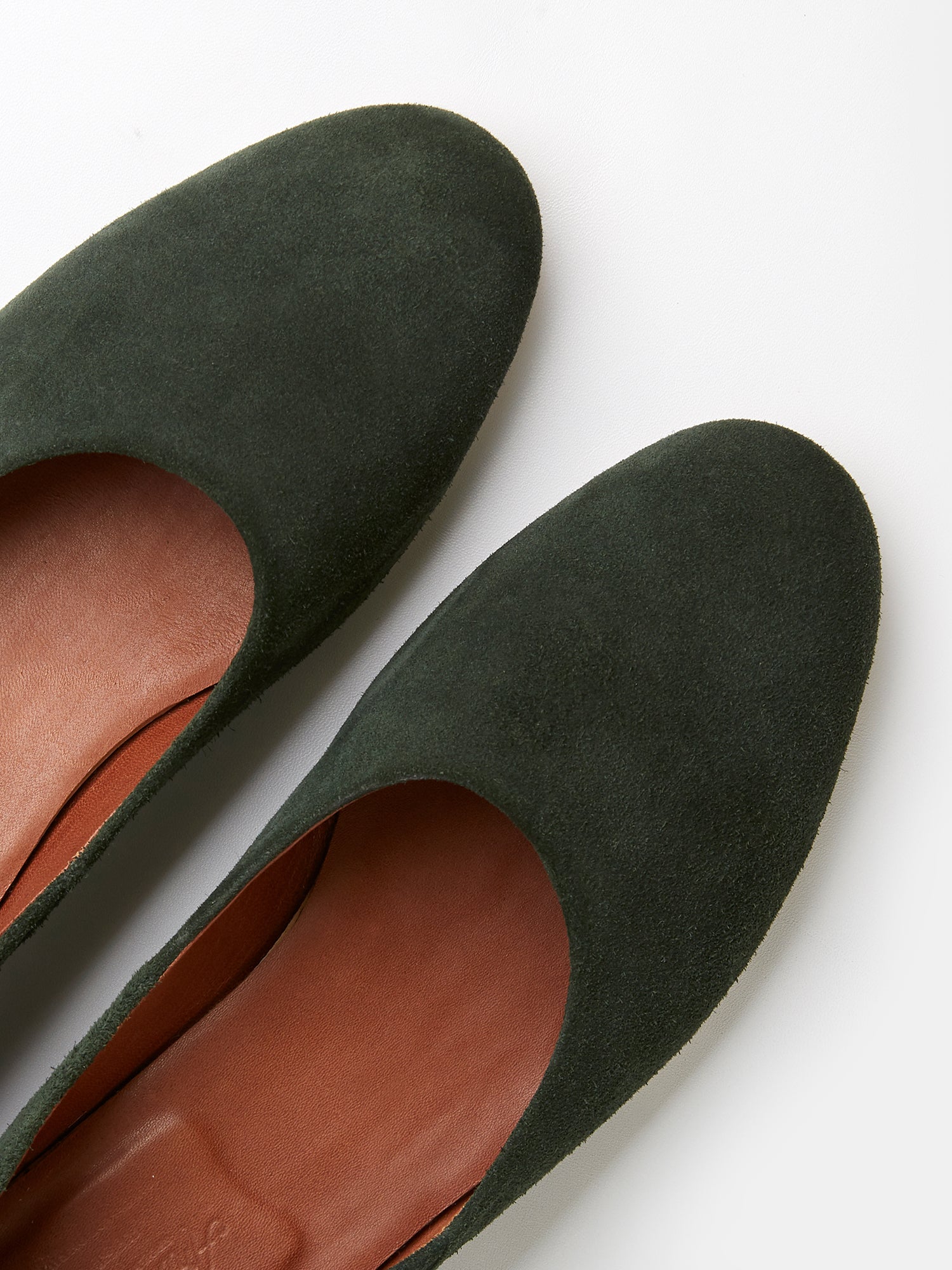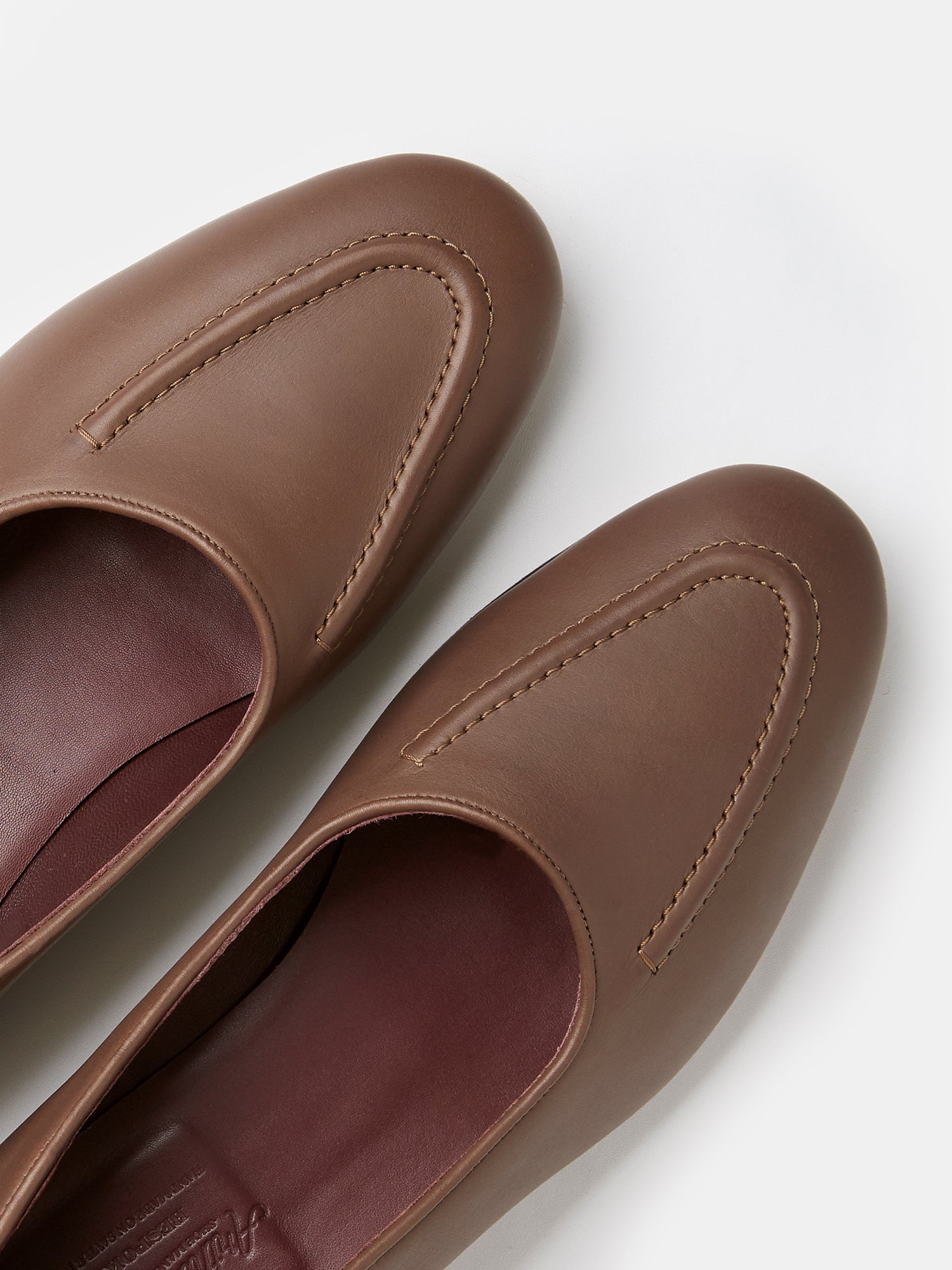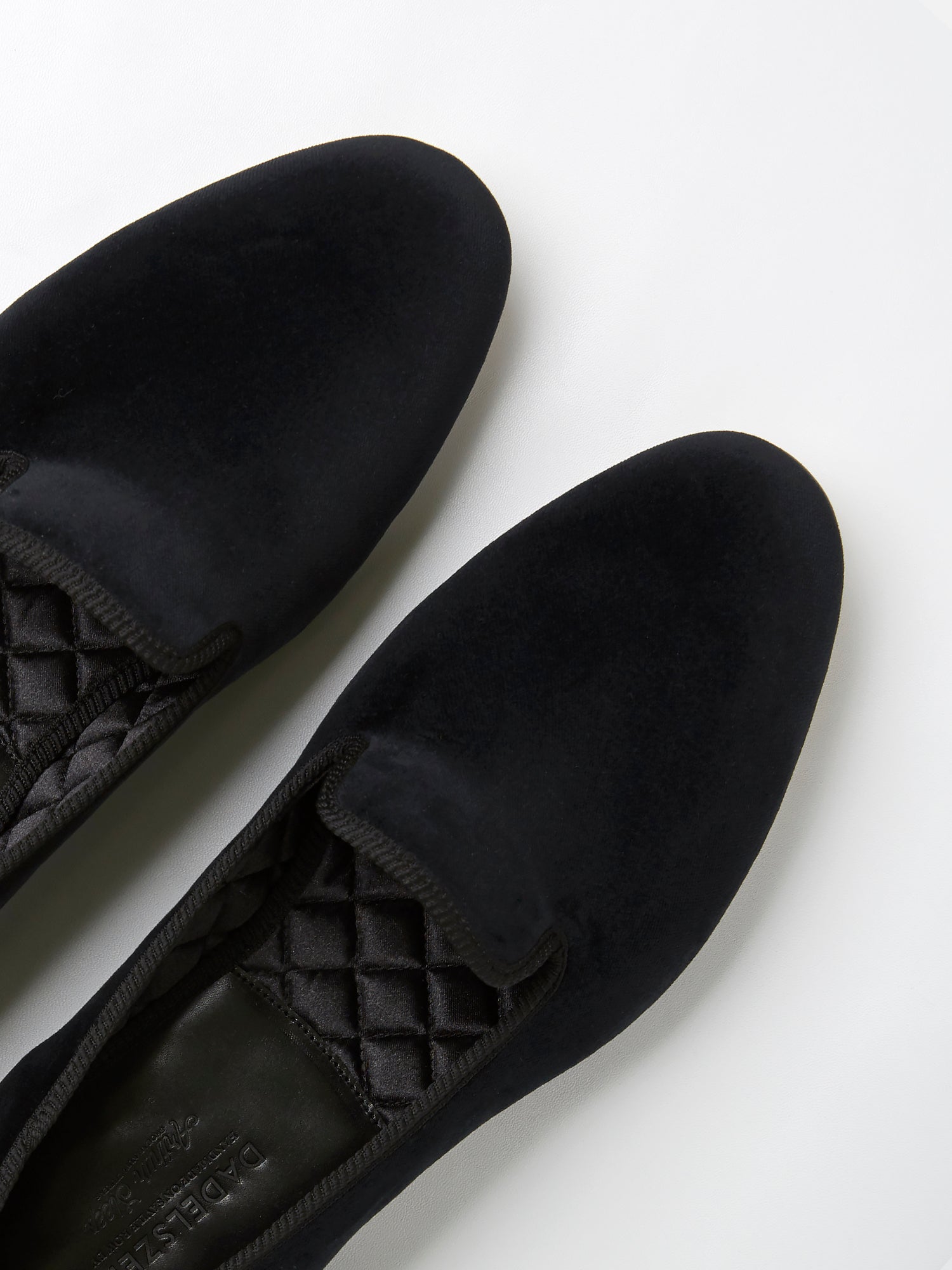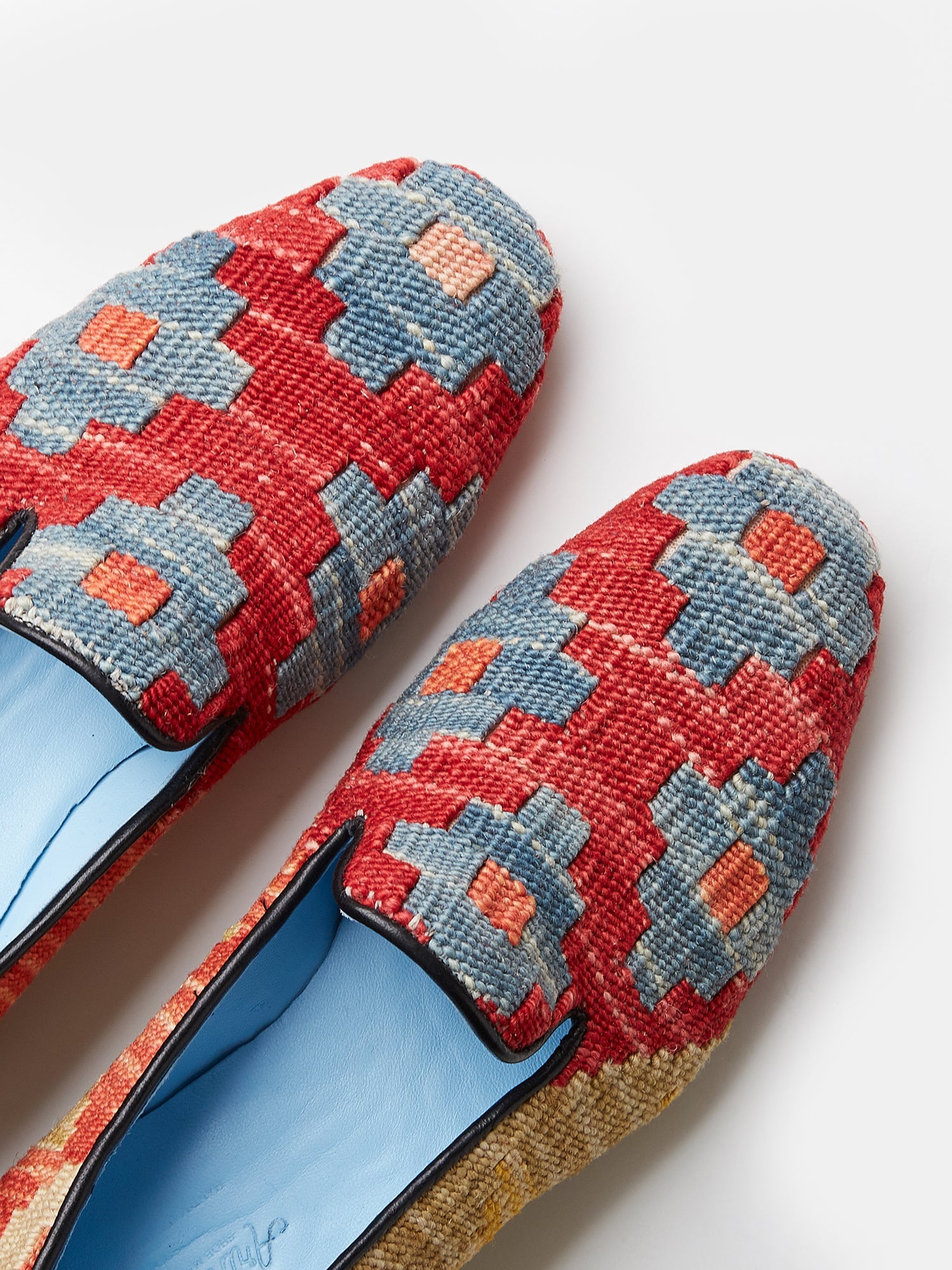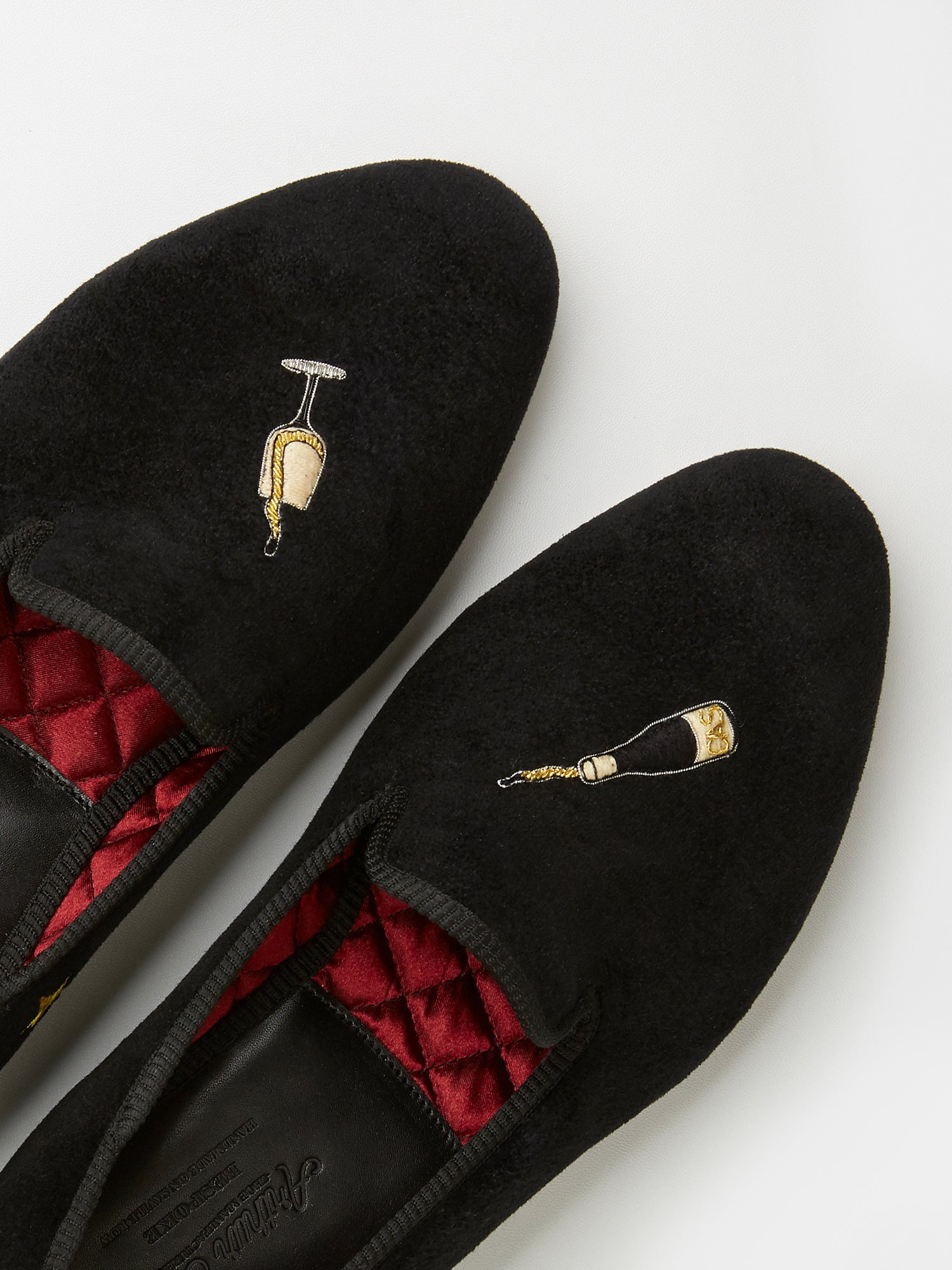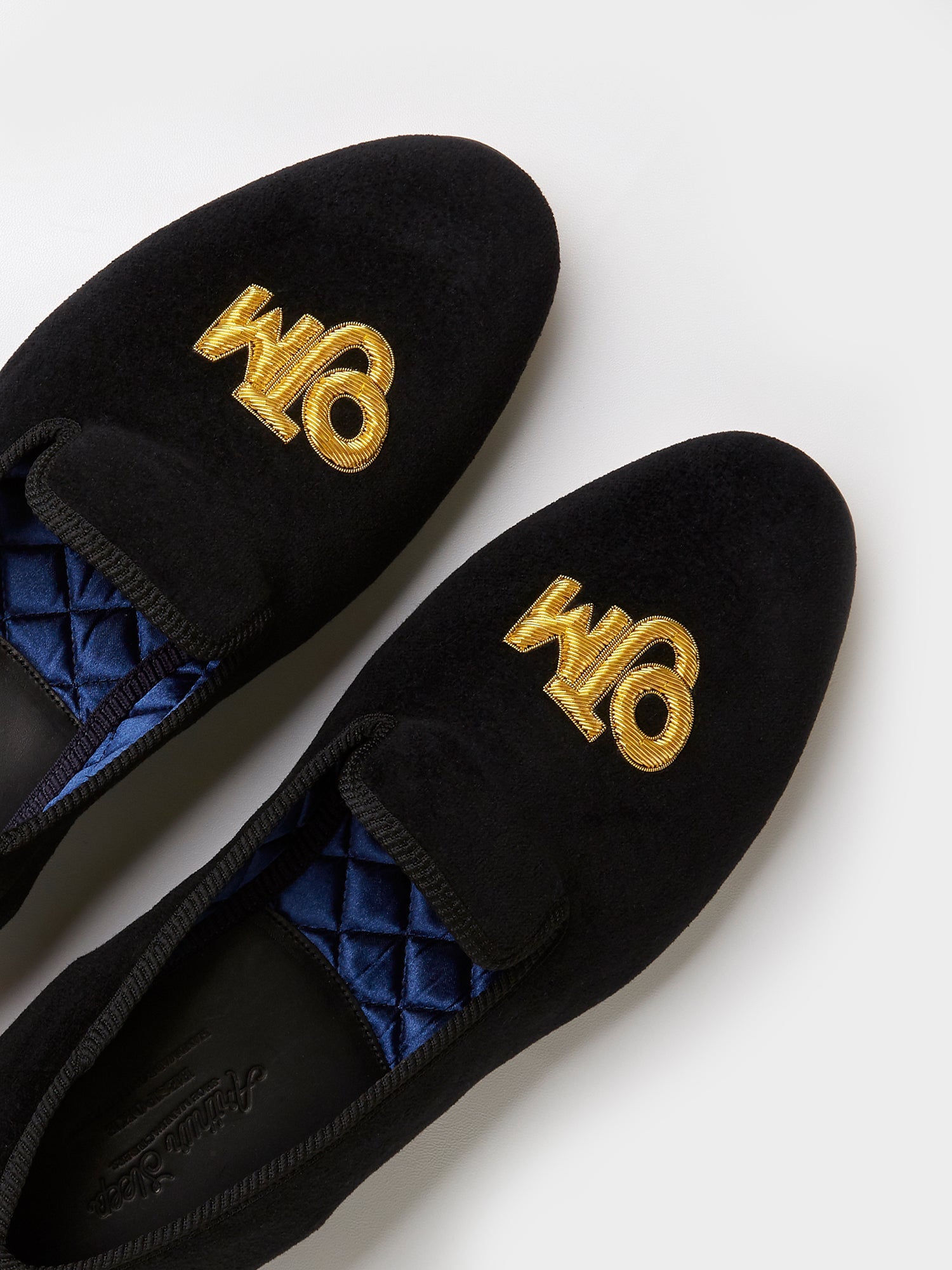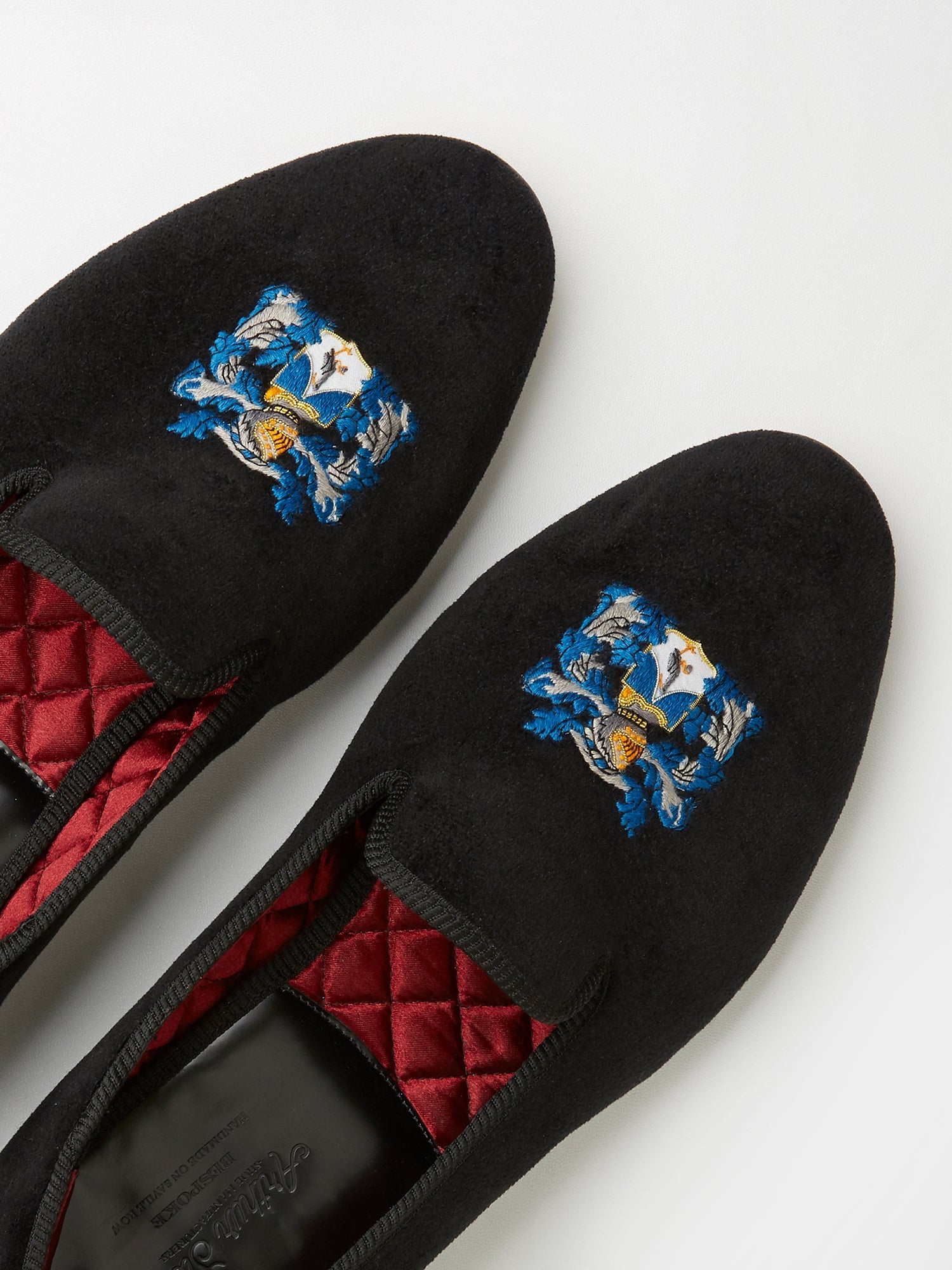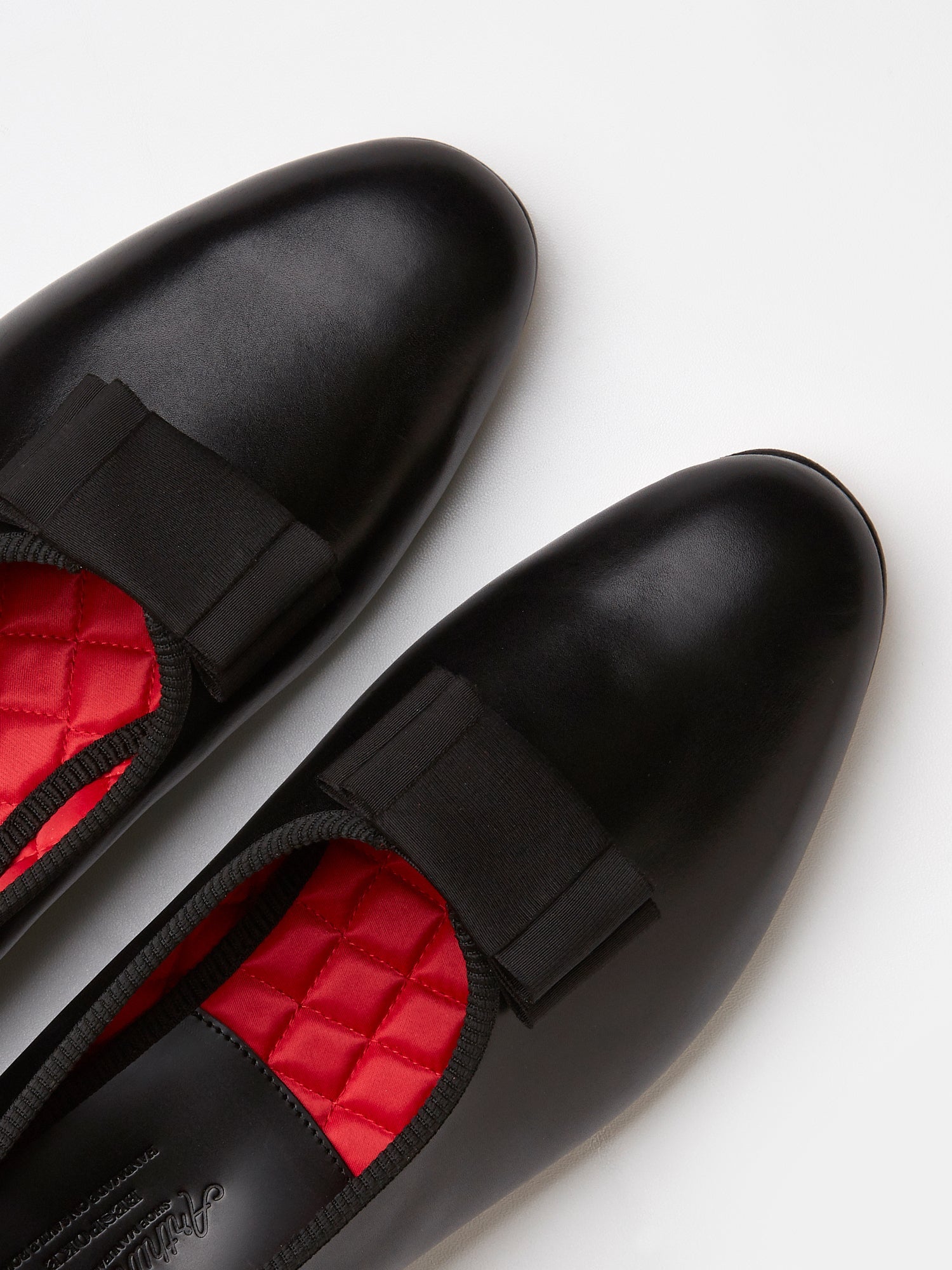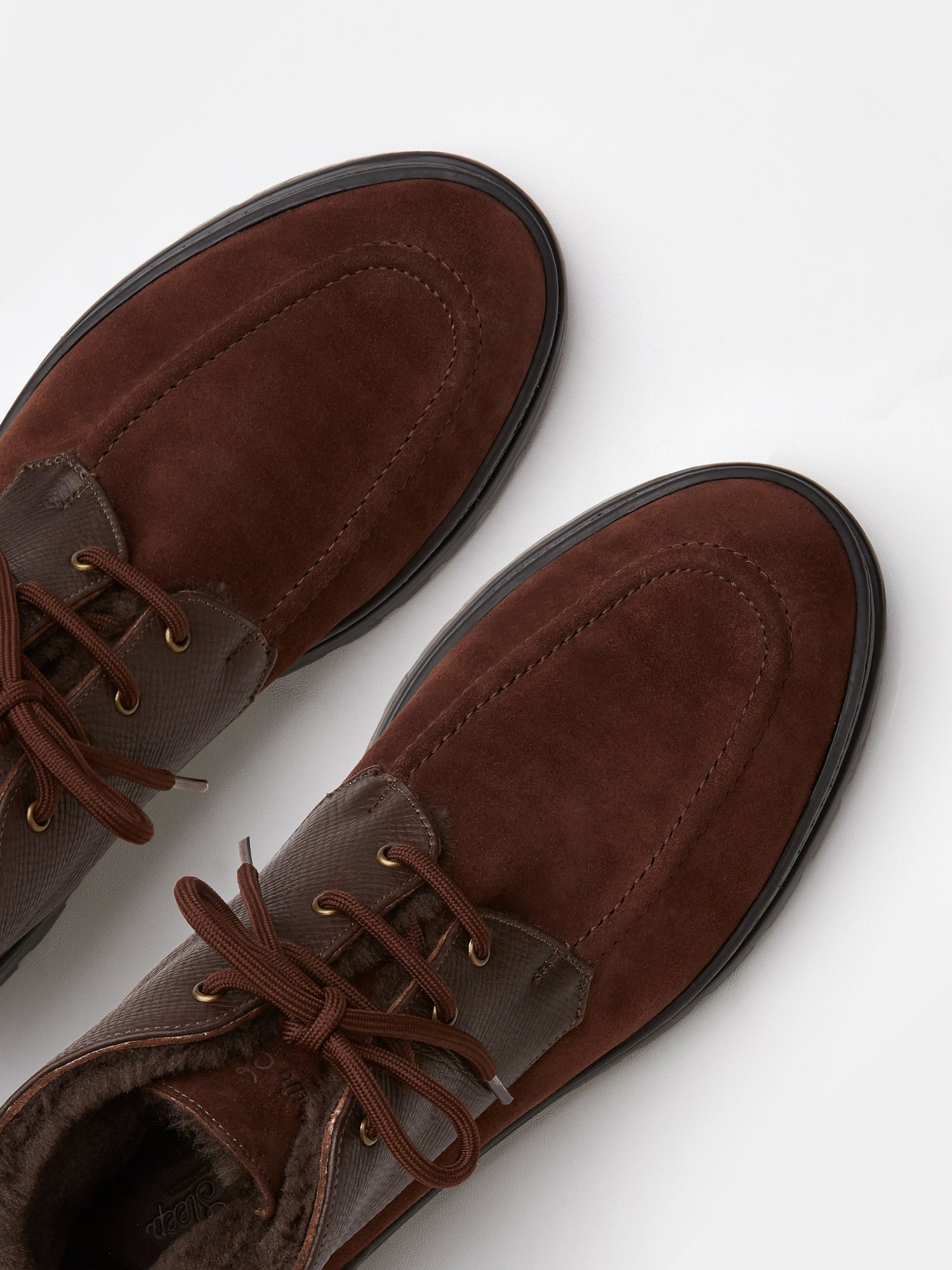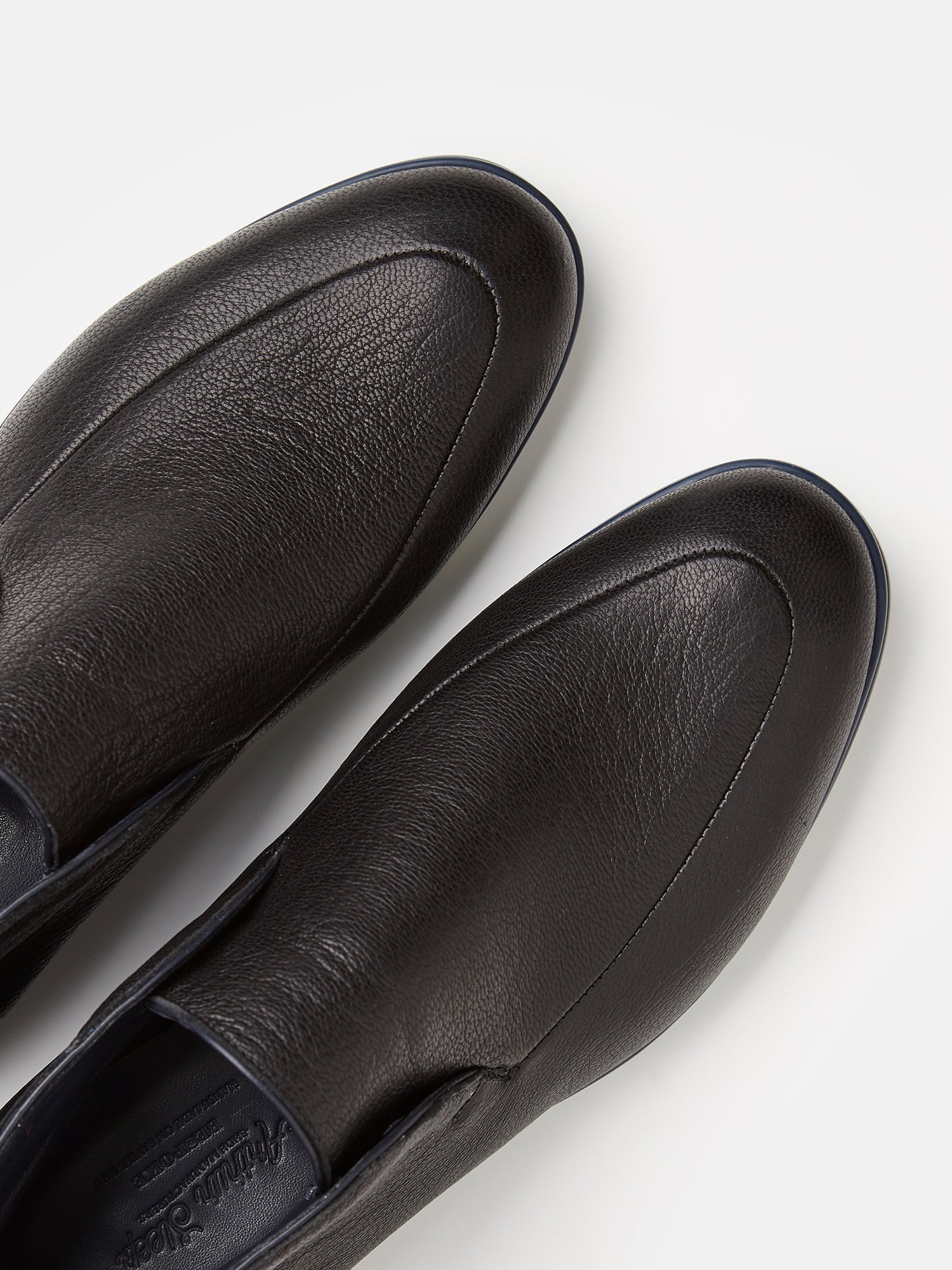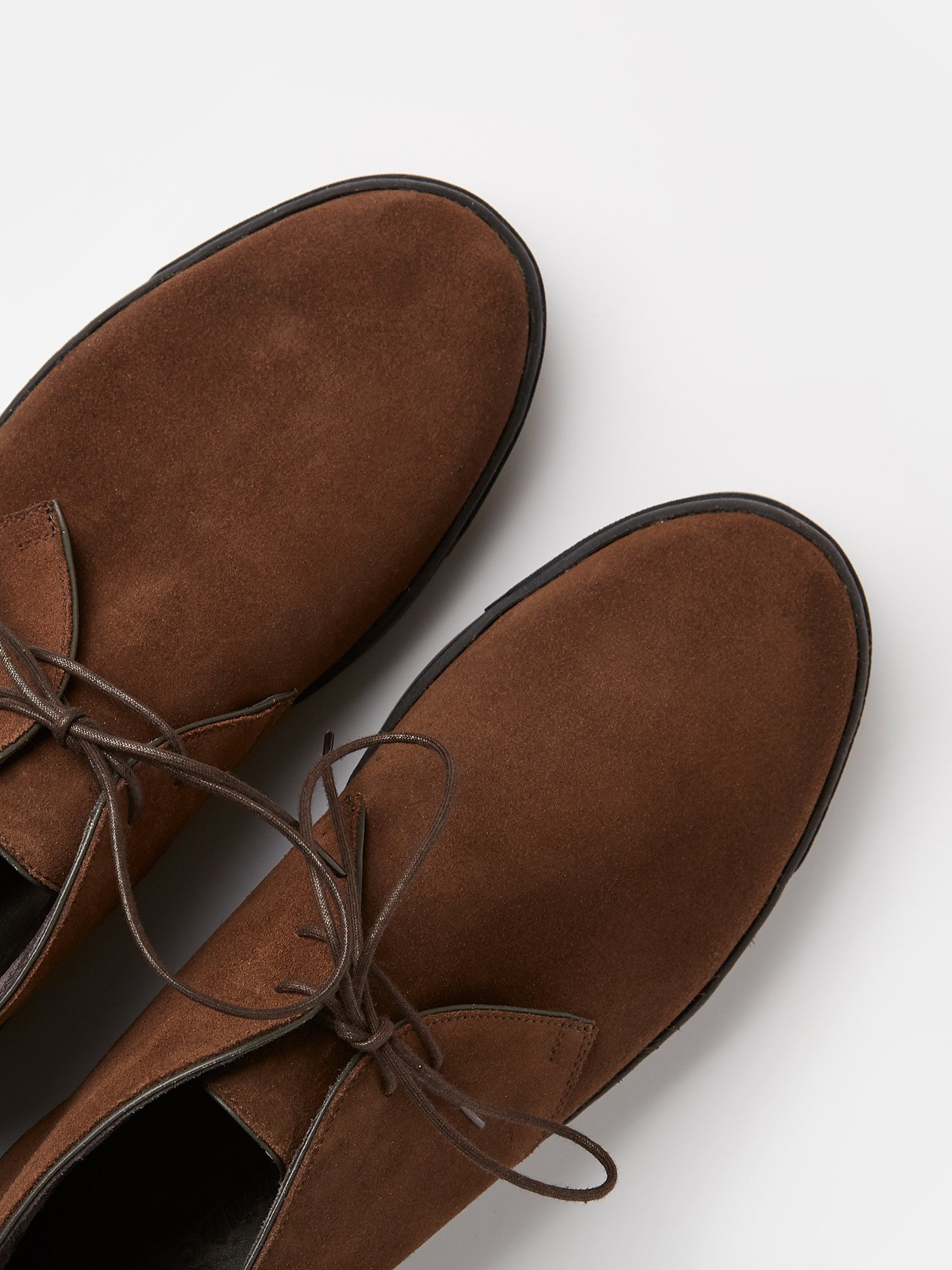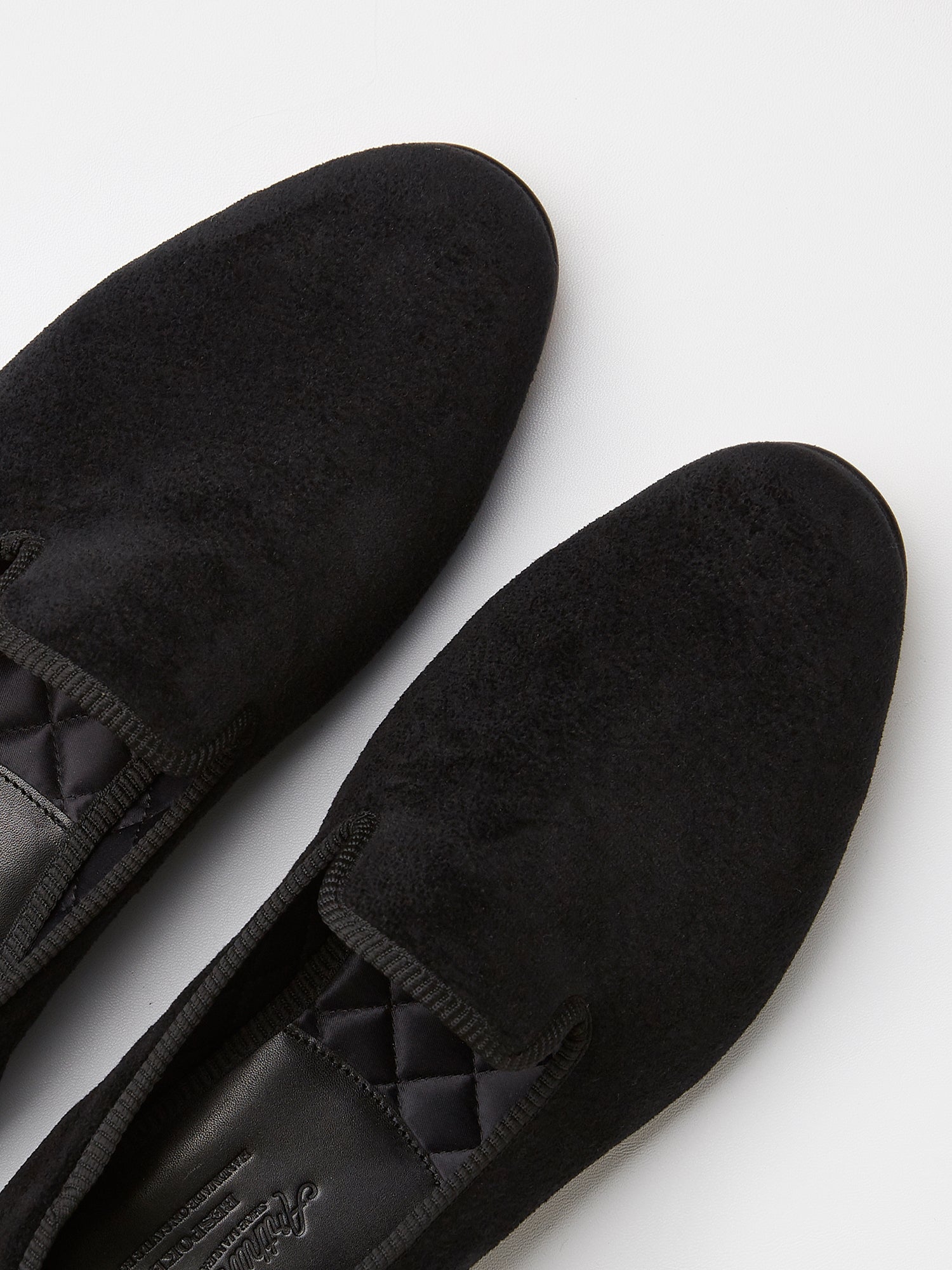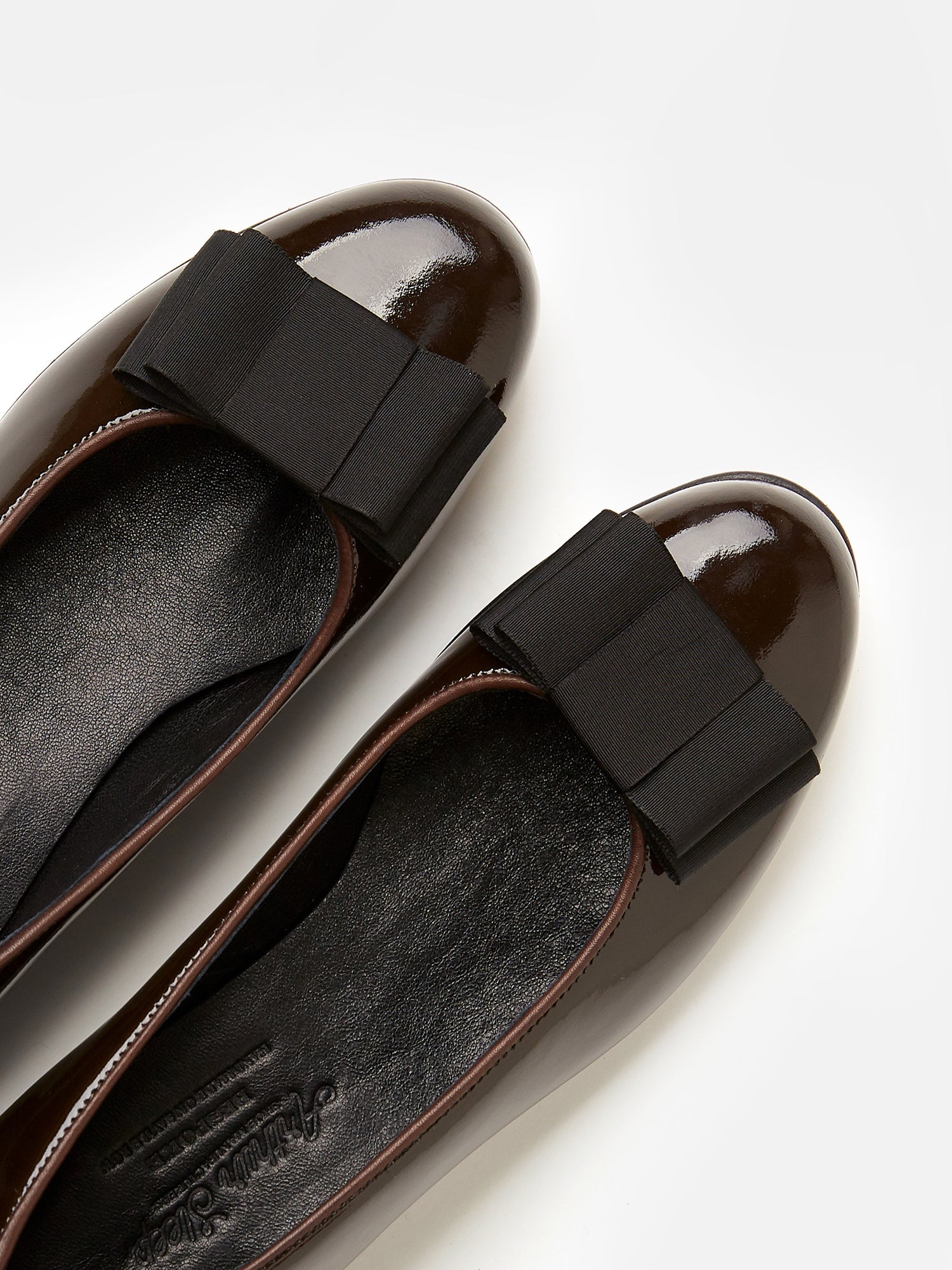The history of the driving shoe is linked to the increasing popularity of driving cars as a form of leisure. Cars were first invented in 1886 by Carl Benz in Germany. By the early 1890s, cars were being imported and driven in England, and by the 1920s, with the help of American innovator Henry Ford, cars were both popular and affordable across Europe and America. The availability of cars made it possible for motoring to become a popular hobby, with clothing such as hats, jackets and gloves being designed specifically for use while driving or riding as a passenger in a car.
The first driving shoe was invented by shoemaker Giulio Miserocchi in 1942, in the Italian alpine village of Domodossola. The rise of the Italian automotive industry led Miserocchi to design a practical yet luxurious shoe inspired by the North American moccasin, but with rubber bumps along the sole and up the backs of the heels for added traction. The light weight design, made without a shank for added flexibility, was usually made in soft, high quality Italian leather, without stiffeners, and meant to be worn barefoot or with a thin sock.
The idea was later picked up by Gianni Mostile, who patented the design and created the brand ‘Car Shoe’ in 1963. Car Shoe brought the classic driving shoe to a much wider market, and the company was eventually purchased by Prada in 2001.
Shoes solely for driving were a major luxury in the mid 20th century, only the very wealthy could afford shoes dedicated to one particular purpose. Driving shoes were often advertised as the ideal accessory for the luxurious Italian sports cars of the 1950s and 1960s, and it’s no coincidence that driving shoes were popularised by the Italian industrialist, playboy, car collector and Fiat company owner, Gianni Agnelli.
By the 1970s, driving shoes were more widely available due to mass manufacturing developments, and they became increasingly popular as fashion relaxed further away from the formal styles of the 1950s. The versatility and comfort of the traditional driving shoe has made it a classic today, but the concept of a purpose made driving shoe has evolved even further.
As motor racing professionalised and became an increasingly technical sport in the1970s, the need for a more high performance driving shoe became apparent. Using the same starting points of comfort, flexibility, grip, and ability to feel the pedals, racewear companies began to develop an alternative driving shoe aimed at the professional driver.



